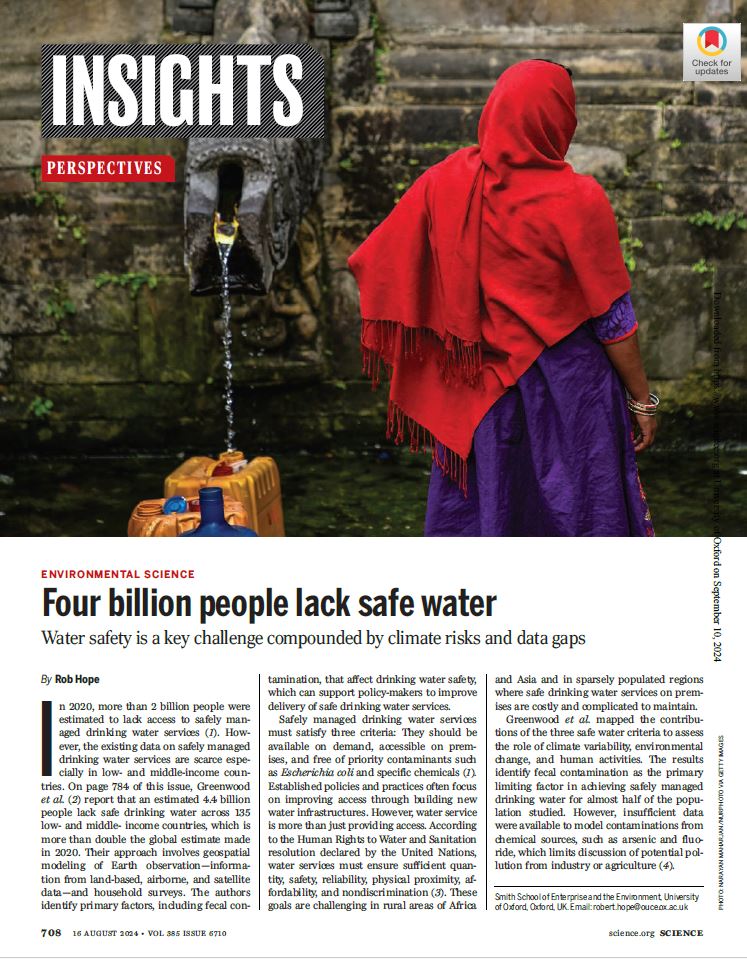Rob Hope
This is a perspective piece relating to a new estimate of the number of people without access to safe drinking water by Esther Greenwood and colleagues in August 2024. The study published in Science involves geospatial modeling of Earth observation—information from land-based, airborne, and satellite data—and household surveys. The authors identify primary factors, including fecal contamination, that affect drinking water safety, which can support policy-makers to improve delivery of safe drinking water services.
In response to this daunting global challenge, subsequent actions and investments need to consider three factors: the right scale, financial sustainability, and water inequalities. Global data provide a general view, whereas national mandates and responsibilities are critical for delivering, monitoring, and maintaining safe water services. More robust, timely, and accurate national data systems are needed to improve water services. Past financial investments have failed to deliver desired outcomes, and future projections are not affordable for middle- and low-income countries. New ideas are needed to shift from financing infrastructure to funding maintenance of safe water services. In addition, a 4 billion target must reflect the social inequalities of water services that disproportionately fall on women, girls, pastoralists, and other groups who often live in water-insecure environments. Policies must balance between serving the greatest number cost-effectively and ensuring equity, so that the most vulnerable are neither excluded nor benefit last.

